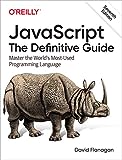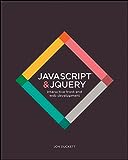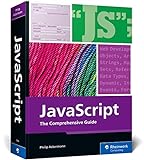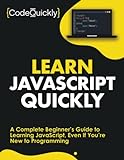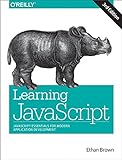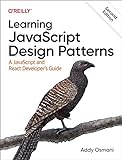To return a JSON object from a MySQL query to GraphQL, you first need to execute the MySQL query and fetch the results. You can use a MySQL library such as MySQL2 or Sequelize to interact with the database. Once you have the results from the query, you can then format the data into a JSON object.
Next, you need to define a GraphQL schema that describes the data structure you want to return. This schema will include the types and fields that make up the JSON object you are returning. You can then create a resolver function that fetches the data from the MySQL query and maps it to the GraphQL schema.
Finally, you can use a GraphQL server such as Apollo Server or Express GraphQL to expose your GraphQL schema and resolver function. When a GraphQL query is made to your server, the resolver function will fetch the data from the MySQL query and return it as a JSON object that conforms to the GraphQL schema.
By following these steps, you can easily return a JSON object from a MySQL query to GraphQL and expose your data to clients in a structured and efficient manner.
What is the significance of data normalization in preparing JSON results for GraphQL from MySQL?
Data normalization is significant in preparing JSON results for GraphQL from MySQL because GraphQL relies on normalized data structures to easily retrieve and manipulate data from a database. By normalizing the data, it ensures that the data is organized in a consistent and efficient manner, making it easier for GraphQL to fetch only the necessary data and avoid redundancy.
Normalization also helps in improving the performance of the GraphQL queries as it reduces the number of redundant data being fetched, minimizes data duplication, and simplifies data fetching and updating operations.
Thus, data normalization plays a crucial role in ensuring that the JSON results obtained from MySQL are well-structured and optimized for GraphQL queries, making the data retrieval process more efficient and effective.
What is the difference between traditional SQL queries and JSON output for GraphQL in MySQL?
Traditional SQL queries are used to retrieve data from a relational database by specifying tables, columns, conditions, and relationships. It involves writing specific queries for each data request, and the result is typically returned in a tabular format.
On the other hand, JSON output for GraphQL in MySQL allows for querying data in a more flexible and dynamic way. With GraphQL, the client can specify the fields and relationships they want to retrieve in a single query, rather than making multiple requests for different pieces of data. The result is returned in a JSON format, which can be easily parsed and manipulated by the client application.
Overall, the main difference between traditional SQL queries and JSON output for GraphQL in MySQL is the level of flexibility and control that GraphQL provides to the client in fetching and shaping the data they need.
How to design efficient database indexes for accelerating JSON retrieval in GraphQL from MySQL queries?
- Identify commonly queried fields: Look at the GraphQL queries being made to your MySQL database and identify which fields are frequently requested. These fields should be indexed to improve retrieval speed.
- Create composite indexes: Combine multiple fields into a single index for even faster retrieval. For example, if your GraphQL queries often request a combination of fields, create a composite index on those fields.
- Use partial indexes: If certain fields are only queried under specific conditions, consider creating partial indexes on those fields. This can reduce index size and improve overall query performance.
- Use functional indexes: If you have complex JSON data that needs to be queried frequently, consider creating functional indexes on specific subsets of the data for faster retrieval.
- Regularly analyze and optimize indexes: Keep track of query performance and regularly analyze the effectiveness of your indexes. Make adjustments as needed to ensure optimal query speed.
- Use indexing tools: Consider using tools like the MySQL Index Advisor to help you identify potential index improvements for your GraphQL queries.
- Consider denormalization: In some cases, denormalizing your JSON data to create separate tables for frequently queried fields can improve retrieval speed. This can be especially useful for large and complex JSON structures.
How to incorporate GraphQL query variables in retrieving JSON data from MySQL?
To incorporate GraphQL query variables in retrieving JSON data from MySQL, you can follow these steps:
- Define a GraphQL schema that includes the query variables you want to use in your query. For example, you can create a query type that includes input variables for filtering data.
- Write a resolver function that processes the query variables and constructs a SQL query accordingly. The resolver function should accept the query variables as arguments and use them to build a dynamic SQL query.
- Use a MySQL client library (such as mysql2 or Sequelize) to execute the SQL query and retrieve the desired JSON data from the MySQL database.
- Return the fetched data as the result of the resolver function, and make sure to properly format it as JSON before sending it back to the client.
By following these steps, you can incorporate GraphQL query variables in retrieving JSON data from MySQL in a secure and efficient manner.
How to structure a MySQL query to retrieve data in JSON format for GraphQL?
To structure a MySQL query to retrieve data in JSON format for GraphQL, you can use the JSON_OBJECT function in MySQL. Here is an example of how you can structure a MySQL query to retrieve data in JSON format for GraphQL:
1 2 3 4 5 6 7 8 |
SELECT JSON_OBJECT( 'id', id, 'name', name, 'email', email, 'age', age ) AS user FROM users WHERE id = 123; |
In this query, we are selecting the id, name, email, and age fields from the users table and converting them into a JSON object using the JSON_OBJECT function. This JSON object is aliased as user in the query result.
You can customize the fields and their values in the JSON_OBJECT function based on the data you want to retrieve for GraphQL. This JSON object can then be easily consumed by your GraphQL server to return the data in JSON format.
How to configure MySQL database to generate JSON output for GraphQL consumption?
To configure MySQL database to generate JSON output for GraphQL consumption, you can follow these steps:
- Install MySQL server and configure it according to your needs.
- Create a table in your database with the required fields.
- Insert some data into the table.
- Use the JSON_OBJECT(), JSON_ARRAY(), and other JSON-related functions in MySQL to generate JSON output for your GraphQL queries.
- Create a GraphQL endpoint using a framework like Apollo Server or Express GraphQL that connects to your MySQL database and queries the data using SQL queries.
- Map the JSON output generated by MySQL to the GraphQL schema so that it can be consumed by your GraphQL clients.
By following these steps, you can configure your MySQL database to generate JSON output for GraphQL consumption.
